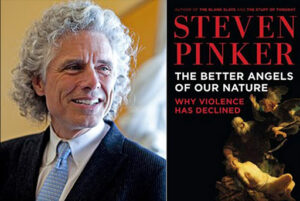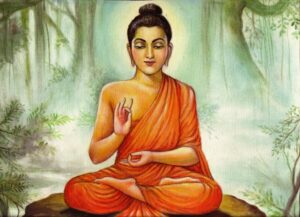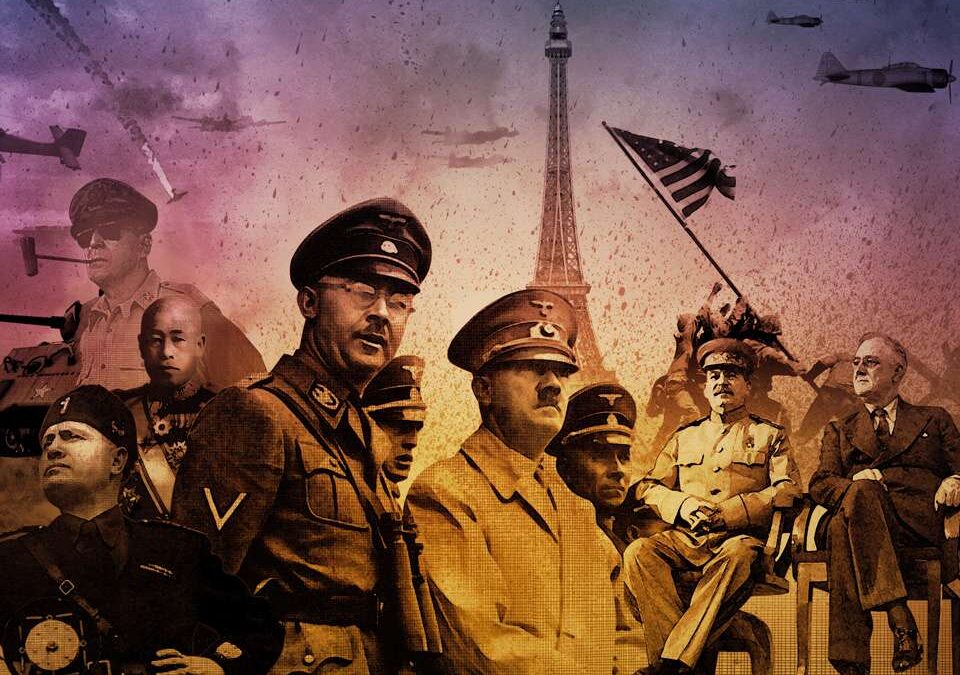In recent history we witnessed the atrocity of Hitler, Mao, Stalin, Poppet, and Rwanda. Even though they have gone, their traces could be seen in today’s terrorist organizations. World Wars, partitions, and ongoing genocides like the daily horrors of Iraq, Syria, Yemen, Ethiopia, Gaza, and Kashmir have lead us to a common understanding that we are in the worst era of violence. However while that is factual, it is not true that we are in the worst phase of violence. In fact violence is declining and perhaps this is the last round of violence and the future is peaceful and non-violent. Statements like this sound very hallucinatory however this is backed by the study of Steven Pinker who is a renowned scholar and psychological scientist at Harvard University. In his ground breaking research and ted talk he disclosed his lifetime’s understanding of Violence & Peace in 20 minutes for us. This is incredible knowledge which is empowering for us to think big and think Peace.
His study gives us a fair idea that we are no more getting killed because of issues like homosexuality, ritualistic children slaughter, killed for talking back to your parents, capital punishments by kings over ten minutes trial, and being dragged with horses or killed underneath an elephants leg. This proves that our ancestors were far more cruel and violent than we are. Violence has been in decline for long stretches of time. Today we are probably living in the most peaceful time since humanity’s existence. Let’s read what Steven Pinkar has to say further;
The 20th century has given us a new understanding of who we are, where we come from and times we are living in?
Steven Pinker’s Study: Why Violence Has Declined
Steven Pinker collected his research on the subject in a new book called The Better Angels of Our Nature. To reach his conclusions, Pinker says he estimated the frequency of violence and violent deaths relative to the human population from prehistory up to the present day. His estimates are supported by ethnographies, archaeological research, law enforcement records, victimization surveys, and statistics recording casualties in armed conflicts. From these records, Pinker determined that up to 15 percent of prehistoric deaths were violent. In contrast, only 0.3 percent of human deaths in 2005 were violent.
Pinker attributes this decline in violence to multiple factors. One is government. Governments hold individuals accountable for their actions, and in turn, social movements make governments accountable to their citizens. Another factor is the co- dependence between groups that has been created by increased trade. More empathy from increased literacy and education might also be contributing to the decrease.

Millennium Scale of Peace & Violence
Steven Pinker in his TED Talk says,
Over 10,000 years back when we were into hunting/ gathering and without permanent settlement or governments, this state was called patrimonial harmony. In that hunting and gathering society a man had 60% chances of dying in the hands of another man as supposed to passing away by natural causes.
Here is some data from Steven Pinker’s research. Average number of battle deaths per conflict since 1946 show a steep decline in interstate wars, deadly ethnic riots, military coups, and a worldwide decline in deaths in interstate wars. This data is primarily from Europe & America (Decade Scale since 1946).
Interpretation
Death rate per conflict have gone drastically down from more than 80,000 deaths per conflict in 1950s to less than 2000 deaths per conflict in 2010s, indicating the decreasing instances of violence in present era.
So when the data says there is steep decline in violence then how come so many people are wrong for something that is so important? How can we make statements that we are living in the most horrific times than feeding upon this knowledge and acting upon it? An ideal statement would be “how do we make this stage better?” Is it because of these three factors as reportedby Steven Pinker;
- Better reporting of violence than peace. Media only reports crime, violence, and things which are wrong, not things which we are doing right.
- Cognitive Illusion – memorable events judged to be more probable. Our brain absorbs shocking news faster than happy news.
- Opinion and advocacy markets which unfortunately again have opinions on everything that is not as per them.
Now when we have corrected our perception about violence, other important question which arises is why and how did violence decline. Was it an automatic evolution or up gradation in humanity? If yes, what were the trigger points and how would the next upgrade be like. Will we all be like the Buddha? Was it anything to do with the arrival of Buddha or moving on from monopolies to democracies? Well may be the English philosopher Thomas Hobbes got it right
Thomas Hobbes’s Philosophy
Thomas Hobbes was the one who said life in the state of nature was solitary, nasty, short, and brutish. Not because he argued human has aggressive instinct but because of the logic of anarchy. In a state of anarchy – it is constant temptation to invade neighbours pre-emptively before they invade them. Deterrence can work, but only if it is credible. To make it credible, must avenge all insults and settle all scores i.e. cycle of vendetta.
Cycle of vendetta decreased as cycle of monopolies moved to democracies.
A state with a monopoly free violence can reduce
- Temptation of attack as it will be punished by other democratic institutions
- Temptation to invade pre-emptively of fear of being attacked by others
- Remove the need of the trigger of retaliation to make the deterrent threat credible
Therefore, leading to a state of peace

The Arrival of Gautam Buddha
With the evolution in mankind, evolution in peace was taking place too. Many leaders, nations and communities started practicing empathy and promoting it as well.
One such community was formed by Gautam Budhha who instructed the rulers to cultivate positive moral qualities such as kindness, honesty, and frugality, and to avoid character flaws such as cruelty, arrogance, and laziness. He also advocated religious tolerance.

The specifics of Buddhist social organization changed with time and place, but the central idea of social harmony and cooperation between all levels of society remained a focal point of the religion as Buddhism moved from country to country.
The goal was to unite the entire cosmos and all beings within it – whether god or human, animal or plant, living or dead – into one harmonious whole. Every individual were well acquainted about his/her social responsibilities towards nation, communities, families, governmental organizations. A society which was free of destruction, wherein world is overflowing with examples of tranquillity and without any traces of bloodshed.
Today we are living in a much better world, which is democratic where freedom of right and speech is exercised. Sometimes, it an awful feeling to flip through newspapers, scroll through TV channels and find information about human conflict, at work, in relationships, communities, nations and natural environment.
As much as we have moved away from civil wars and literal historic ritualistic violence where “human life” was very cheapwe now have a bigger issue at hand, the subtle violence of inner – conflict, poverty, diseases, and stress. We have to unlearn a lot of things and accept a new way to understand peace.


Recent Comments